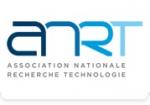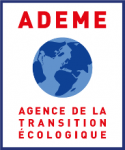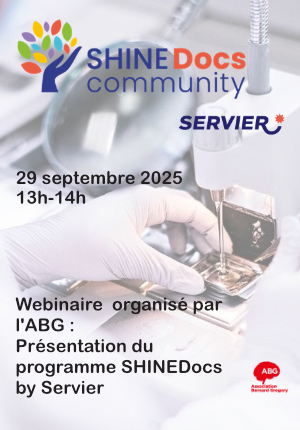Rôle des plantes sauvages et ornementales dans l'infestation des cerisiers par la mouche exotique envahissante Drosophila suzukii // Role of wild and ornamental plants in the infestation of cherry trees by the invasive exotic fly Drosophila suzukii
|
ABG-133358
ADUM-67365 |
Thesis topic | |
| 2025-09-09 |
Université de Picardie - Jules Verne
Amiens - Les Hauts de France - France
Rôle des plantes sauvages et ornementales dans l'infestation des cerisiers par la mouche exotique envahissante Drosophila suzukii // Role of wild and ornamental plants in the infestation of cherry trees by the invasive exotic fly Drosophila suzukii
- Ecology, environment
invasion biologique, ravageur de culture, Drosophila suzukii, mouche des fruits, cerises, écologie
biological invasion, crop pest, Drosophila suzukii, fruit fly, cherries, ecology
biological invasion, crop pest, Drosophila suzukii, fruit fly, cherries, ecology
Topic description
Drosophila suzukii, ou la « drosophile à ailes tachetées », est une mouche exotique envahissante originaire d'Asie, qui connaît depuis 2008 une expansion spectaculaire de son aire de répartition, et qui ravage les cultures de fruits rouges comme les cerises, les fraises ou les framboises. Son potentiel de nuisance est particulièrement fort sur les cultures de cerises, amenant fréquemment à l'abandon des parcelles, à l'arrachage des arbres et in fine à une crise totale de la filière de production des cerises. Aucune solution de lutte à la fois efficace et environnementalement durable n'a été trouvée jusqu'à présent, alors que les politiques européennes s'orientent vers l'anticipation du retrait des substances actives de protection des cultures. Hormis les fruits cultivés, les larves de la mouche se développent aussi dans de très nombreux fruits sauvages (sureau, mûres, etc.) et ornementaux dont les fruits maturent durant l'hiver et le début du printemps. Ces fruits vernaux et printaniers pourraient amplifier l'inoculum des populations post-hivernales de D. suzukii et servir de passerelles amenant aux premières infestations de cerises cultivées. Par ailleurs, des échanges récents avec les arboriculteurs spécialisés dans la cerise nous laissent penser que les fruits tombés au sol sont une source majeure d'auto-contamination des cerisiers au sein des exploitations. Ce problème est aggravé avec la proximité de cerisiers des jardins des particuliers et de cerisiers abandonnés de toute gestion prophylactique comme le ramassage des fruits contaminés pourrissant au sol.
L'objectif de la thèse est, dans un premier temps, de comprendre comment ces plantes sauvages et ornementales précoces servent de réservoirs de Drosophila suzukii en fin d'hiver et début de printemps et contribuent par la suite aux infestations de cerisiers. Dans un second temps, le but sera également d'identifier les facteurs environnementaux (climat, paysage, conditions locales) favorisant ou limitant les infestations de cerises en France métropolitaine, avec un focus particulier sur les cerisiers de jardin ou abandonnés, souvent très contaminés et catalyseurs de l'explosion des populations de la mouche. Une meilleure connaissance de l'écologie printanière de cette mouche envahissante permettrait de développer des techniques alternatives et préventives de lutte prophylactiques basées sur les faiblesses du cycle écologique de la mouche, à l'échelle du paysage et de la parcelle, avant la fructification des cerisiers (ex. : taille/élagage des plantes en fin de saison précédente selon leur phénologie de floraison, expériences d'enterrement des cerises contaminées, etc.). Un autre défi serait de prédire les risques annuels d'infestation des cerisiers en amont de leur fructification à partir des premiers indices d'infestations des fruits d'hiver. Au cours de la thèse, un monitoring des infestations des fruits, des piégeages d'insectes et des expériences de terrain seront réalisés sur les parcelles agricoles ou dans les habitats naturels et anthropisés.
------------------------------------------------------------------------------------------------------------------------------------------------------------------------
------------------------------------------------------------------------------------------------------------------------------------------------------------------------
Drosophila suzukii, or the spotted wing drosophila, is an invasive exotic fly native to Asia, which expands its range since 2008 over the globe and devastates red fruit crops such as cherries, strawberries and raspberries. Its potential for damage is particularly high on cherry crops, frequently leading to the abandonment of cultivated tree stands and, ultimately, causing a total crisis in the cherry production sector. No effective and environmentally sustainable control solution has been found to date, while European policies are moving towards the anticipated withdrawal of active substances used in crop protection. In addition to cultivated fruit, the fly's larvae also develop in many wild fruits (elderberries, blackberries, etc.) and ornamental fruits that ripen during winter and early spring. These spring fruits could amplify the inoculum of post-winter populations of Drosophila suzukii and serve as gateways leading to the first infestations of cultivated cherries. Furthermore, recent discussions with cherry growers suggest that fruits fallen to the ground are a major source of self-contamination of cherry trees within orchards. This problem is exacerbated by the proximity of cherry trees in private gardens and cherry trees that are not subject to any preventive measures, such as harvesting of contaminated fruit rotting on the ground.
The aim of the thesis is firstly to understand how these early-fruiting wild and ornamental plants serve as reservoirs for Drosophila suzukii in late winter and early spring and subsequently contribute to cherry tree infestations. Secondly, the aim will also be to identify the environmental factors (climate, landscape, local conditions) that favour or limit cherry infestations in France, with a particular focus on garden or abandoned cherry trees, which are often highly contaminated and act as catalysts for the explosion of fly populations. A better understanding of the spring ecology of this invasive fly would enable the development of alternative and preventive prophylactic control techniques based on the weaknesses of the fly's ecological cycle, at the landscape and local scales, before the cherry trees bear fruit (e.g. pruning/trimming plants at the end of the previous season according to their flowering phenology, experiments with burying contaminated cherries, etc.). Another challenge would be to predict the annual risk of cherry tree infestation prior to fruiting based on the first signs of infestation in winter fruit. During the thesis, fruit infestation monitoring, insect trapping and field experiments will be carried out on agricultural plots or in natural and anthropised habitats.
------------------------------------------------------------------------------------------------------------------------------------------------------------------------
------------------------------------------------------------------------------------------------------------------------------------------------------------------------
Début de la thèse : 01/10/2025
WEB : https://ecophytopic.fr/recherche-innovation/proteger/projet-quandinskii
L'objectif de la thèse est, dans un premier temps, de comprendre comment ces plantes sauvages et ornementales précoces servent de réservoirs de Drosophila suzukii en fin d'hiver et début de printemps et contribuent par la suite aux infestations de cerisiers. Dans un second temps, le but sera également d'identifier les facteurs environnementaux (climat, paysage, conditions locales) favorisant ou limitant les infestations de cerises en France métropolitaine, avec un focus particulier sur les cerisiers de jardin ou abandonnés, souvent très contaminés et catalyseurs de l'explosion des populations de la mouche. Une meilleure connaissance de l'écologie printanière de cette mouche envahissante permettrait de développer des techniques alternatives et préventives de lutte prophylactiques basées sur les faiblesses du cycle écologique de la mouche, à l'échelle du paysage et de la parcelle, avant la fructification des cerisiers (ex. : taille/élagage des plantes en fin de saison précédente selon leur phénologie de floraison, expériences d'enterrement des cerises contaminées, etc.). Un autre défi serait de prédire les risques annuels d'infestation des cerisiers en amont de leur fructification à partir des premiers indices d'infestations des fruits d'hiver. Au cours de la thèse, un monitoring des infestations des fruits, des piégeages d'insectes et des expériences de terrain seront réalisés sur les parcelles agricoles ou dans les habitats naturels et anthropisés.
------------------------------------------------------------------------------------------------------------------------------------------------------------------------
------------------------------------------------------------------------------------------------------------------------------------------------------------------------
Drosophila suzukii, or the spotted wing drosophila, is an invasive exotic fly native to Asia, which expands its range since 2008 over the globe and devastates red fruit crops such as cherries, strawberries and raspberries. Its potential for damage is particularly high on cherry crops, frequently leading to the abandonment of cultivated tree stands and, ultimately, causing a total crisis in the cherry production sector. No effective and environmentally sustainable control solution has been found to date, while European policies are moving towards the anticipated withdrawal of active substances used in crop protection. In addition to cultivated fruit, the fly's larvae also develop in many wild fruits (elderberries, blackberries, etc.) and ornamental fruits that ripen during winter and early spring. These spring fruits could amplify the inoculum of post-winter populations of Drosophila suzukii and serve as gateways leading to the first infestations of cultivated cherries. Furthermore, recent discussions with cherry growers suggest that fruits fallen to the ground are a major source of self-contamination of cherry trees within orchards. This problem is exacerbated by the proximity of cherry trees in private gardens and cherry trees that are not subject to any preventive measures, such as harvesting of contaminated fruit rotting on the ground.
The aim of the thesis is firstly to understand how these early-fruiting wild and ornamental plants serve as reservoirs for Drosophila suzukii in late winter and early spring and subsequently contribute to cherry tree infestations. Secondly, the aim will also be to identify the environmental factors (climate, landscape, local conditions) that favour or limit cherry infestations in France, with a particular focus on garden or abandoned cherry trees, which are often highly contaminated and act as catalysts for the explosion of fly populations. A better understanding of the spring ecology of this invasive fly would enable the development of alternative and preventive prophylactic control techniques based on the weaknesses of the fly's ecological cycle, at the landscape and local scales, before the cherry trees bear fruit (e.g. pruning/trimming plants at the end of the previous season according to their flowering phenology, experiments with burying contaminated cherries, etc.). Another challenge would be to predict the annual risk of cherry tree infestation prior to fruiting based on the first signs of infestation in winter fruit. During the thesis, fruit infestation monitoring, insect trapping and field experiments will be carried out on agricultural plots or in natural and anthropised habitats.
------------------------------------------------------------------------------------------------------------------------------------------------------------------------
------------------------------------------------------------------------------------------------------------------------------------------------------------------------
Début de la thèse : 01/10/2025
WEB : https://ecophytopic.fr/recherche-innovation/proteger/projet-quandinskii
Funding category
Funding further details
Programmes ministériels spécifiques
Presentation of host institution and host laboratory
Université de Picardie - Jules Verne
Institution awarding doctoral degree
Université de Picardie - Jules Verne
Graduate school
585 Sciences, Technologie, Santé
Candidate's profile
Niveau et formation recommandée : BAC+5, sciences écologiques et environnementales, agronomie.
Compétences :
-Bonnes connaissances en écologie, entomologie, botanique, biologie des invasions et/ou écologie du paysage.
-Maitrise de logiciels de statistiques (R, etc., avec pratique des analyses univariées et multivariées) et de logiciels bibliographiques (Zotero). Expérience de logiciels de cartographie si possible.
-Bonne maitrise de l'anglais tant à l'écrit qu'à l'oral.
-Bonne capacité à conduire des relevés sur le terrain (monitoring dans les habitats naturels et sur les parcelles agricoles) et des expériences en conditions contrôlées.
-Rigueur, capacités d'initiative, aptitude au travail en autonomie autant qu'en équipe
-PERMIS B (voiture)
Recommended level and training: Master degree in ecological and environmental sciences, agronomy. Skills: -Good knowledge in ecology, entomology, botany, invasion biology and/or landscape ecology. -Proficiency in statistical software (R, etc., with experience in univariate and multivariate analyses) and bibliographic software (Zotero). Experience with mapping software if possible. -Good level in English. -Good ability to conduct field surveys (monitoring in natural habitats and in agricultural areas) and experiments under controlled conditions. -Rigorous, proactive, able to work in a team. -Driving licence (car)
Recommended level and training: Master degree in ecological and environmental sciences, agronomy. Skills: -Good knowledge in ecology, entomology, botany, invasion biology and/or landscape ecology. -Proficiency in statistical software (R, etc., with experience in univariate and multivariate analyses) and bibliographic software (Zotero). Experience with mapping software if possible. -Good level in English. -Good ability to conduct field surveys (monitoring in natural habitats and in agricultural areas) and experiments under controlled conditions. -Rigorous, proactive, able to work in a team. -Driving licence (car)
2025-09-17
Apply
Close
Vous avez déjà un compte ?
Nouvel utilisateur ?
More information about ABG?
Get ABG’s monthly newsletters including news, job offers, grants & fellowships and a selection of relevant events…
Discover our members
 Institut Sup'biotech de Paris
Institut Sup'biotech de Paris  TotalEnergies
TotalEnergies  ASNR - Autorité de sûreté nucléaire et de radioprotection - Siège
ASNR - Autorité de sûreté nucléaire et de radioprotection - Siège  Aérocentre, Pôle d'excellence régional
Aérocentre, Pôle d'excellence régional  Tecknowmetrix
Tecknowmetrix  Ifremer
Ifremer  MabDesign
MabDesign  ANRT
ANRT  Laboratoire National de Métrologie et d'Essais - LNE
Laboratoire National de Métrologie et d'Essais - LNE  CASDEN
CASDEN  Groupe AFNOR - Association française de normalisation
Groupe AFNOR - Association française de normalisation  ONERA - The French Aerospace Lab
ONERA - The French Aerospace Lab  Généthon
Généthon  ADEME
ADEME  CESI
CESI  MabDesign
MabDesign  Nokia Bell Labs France
Nokia Bell Labs France  PhDOOC
PhDOOC  SUEZ
SUEZ






